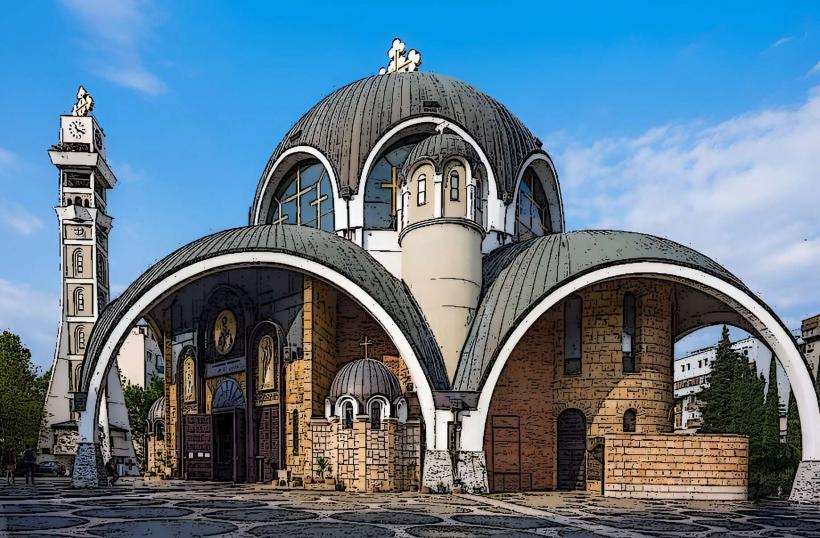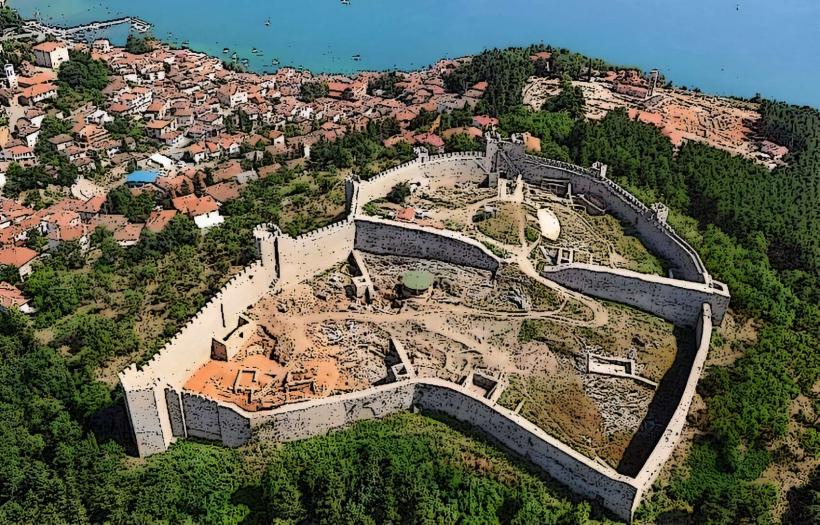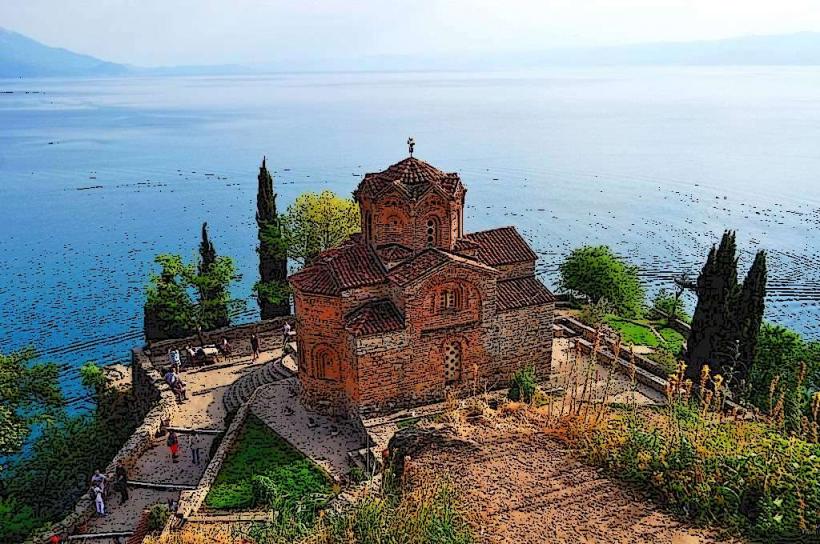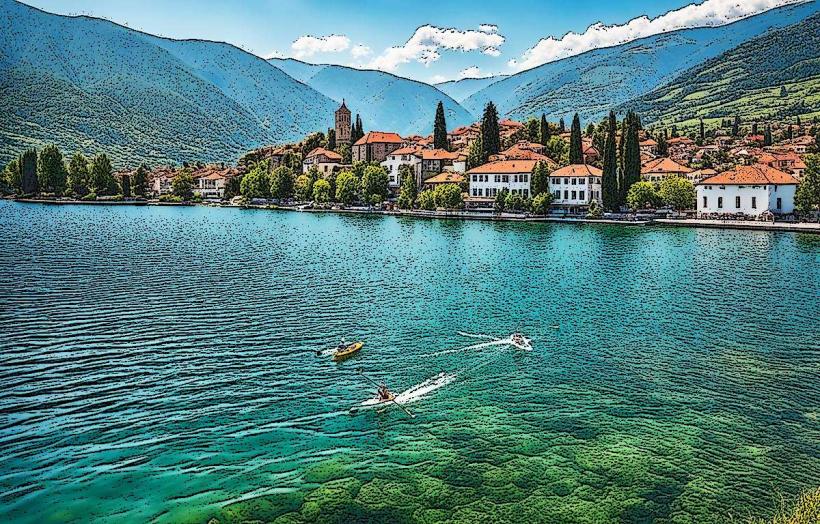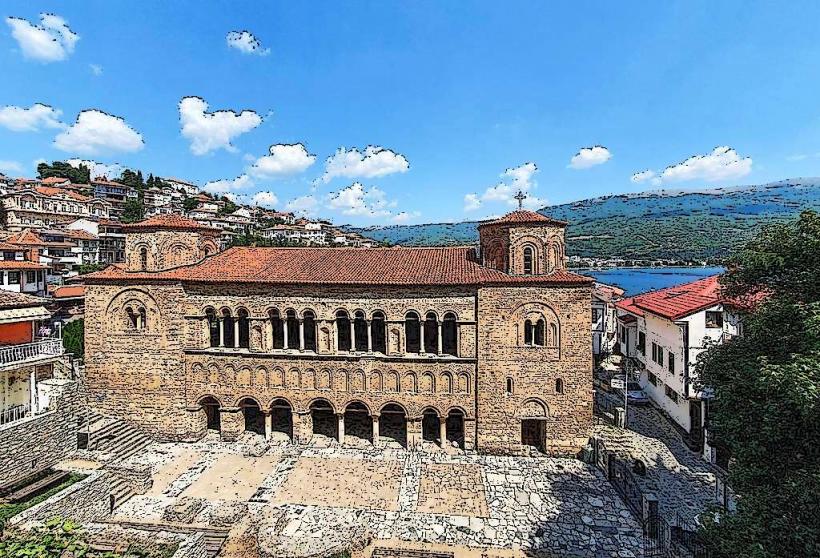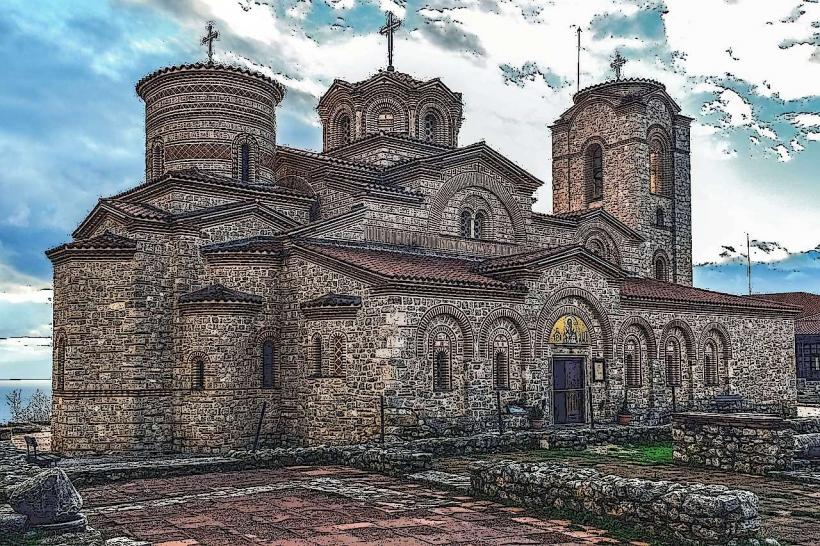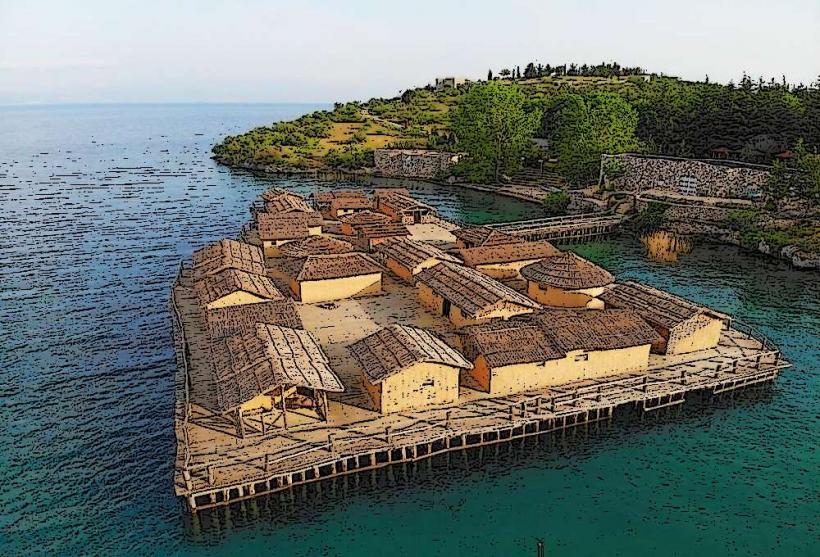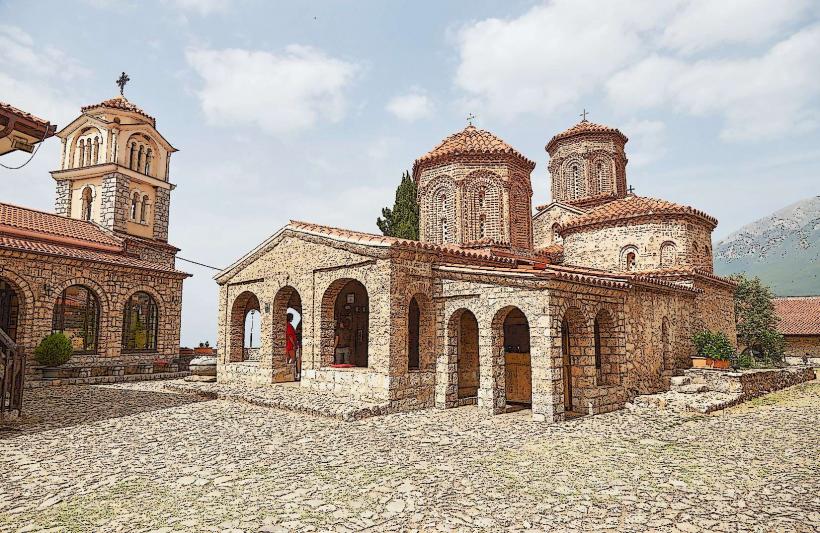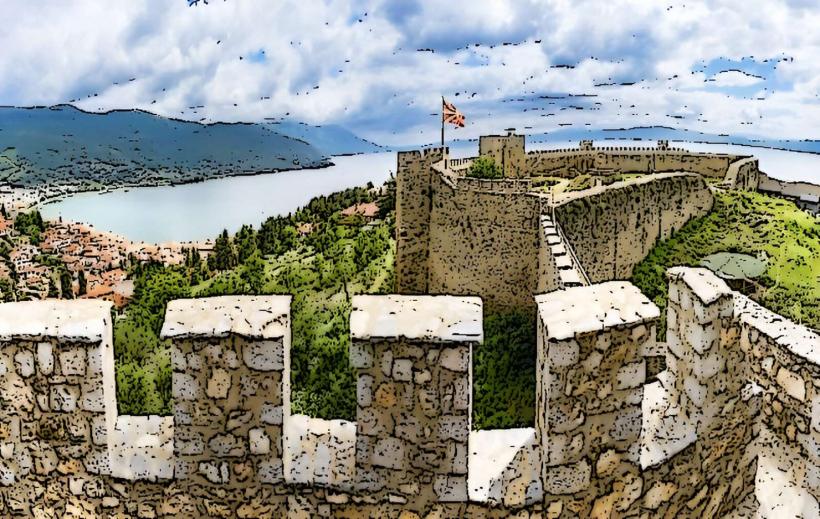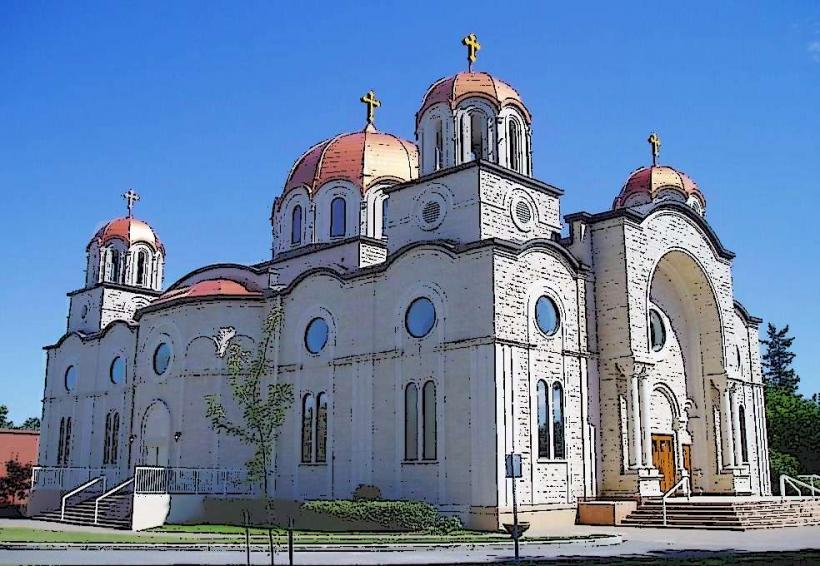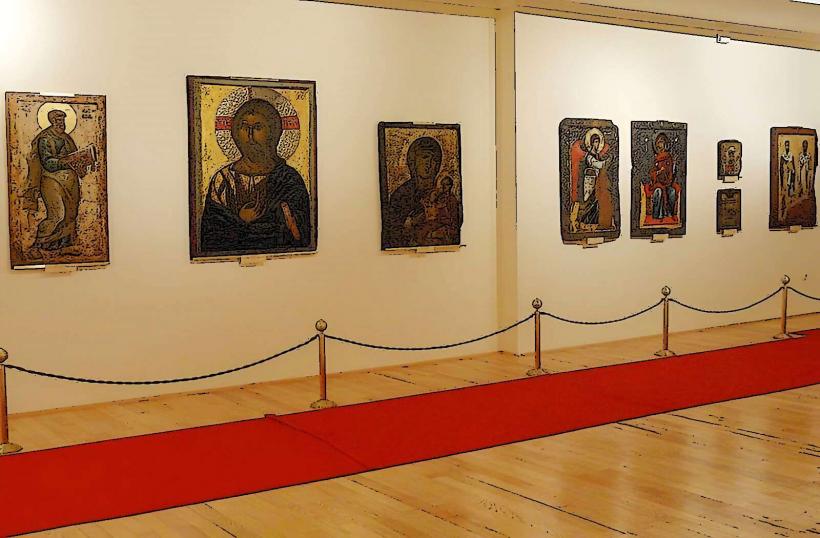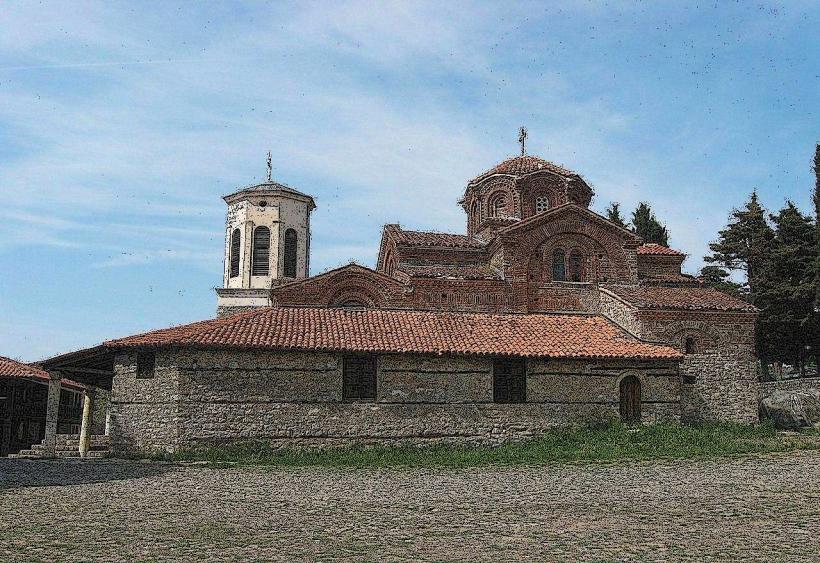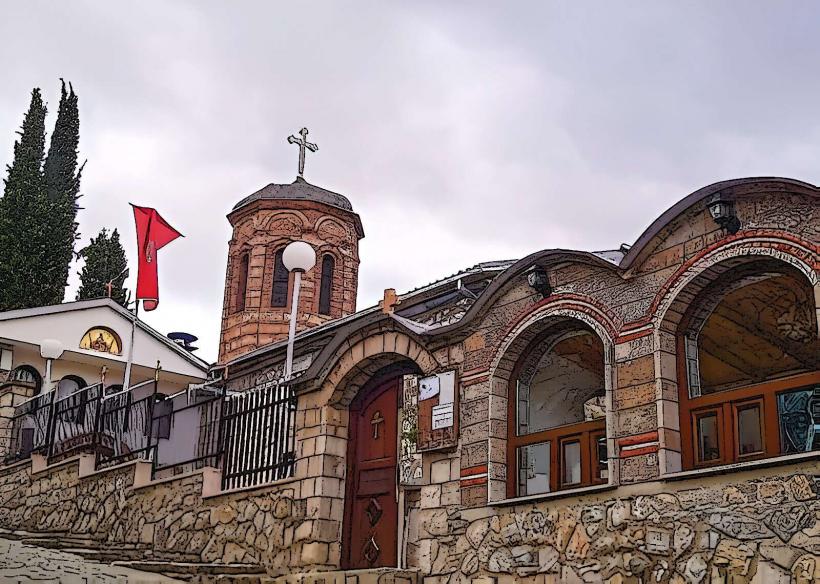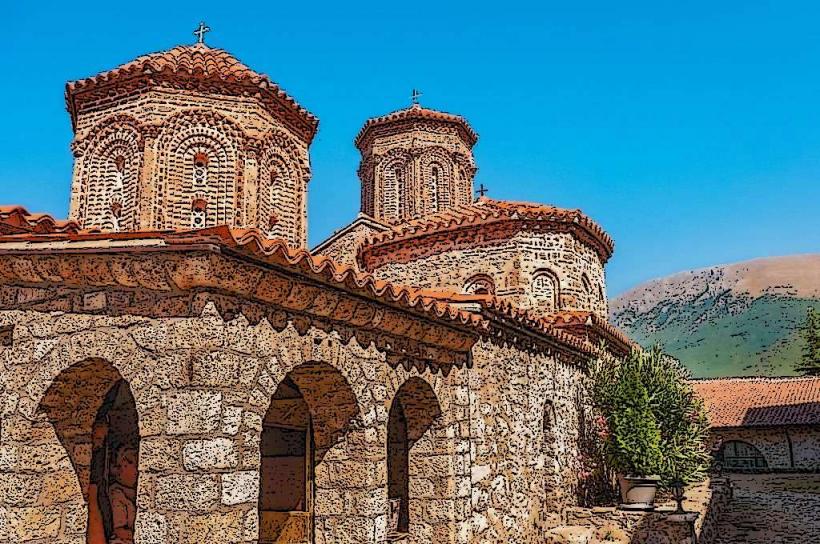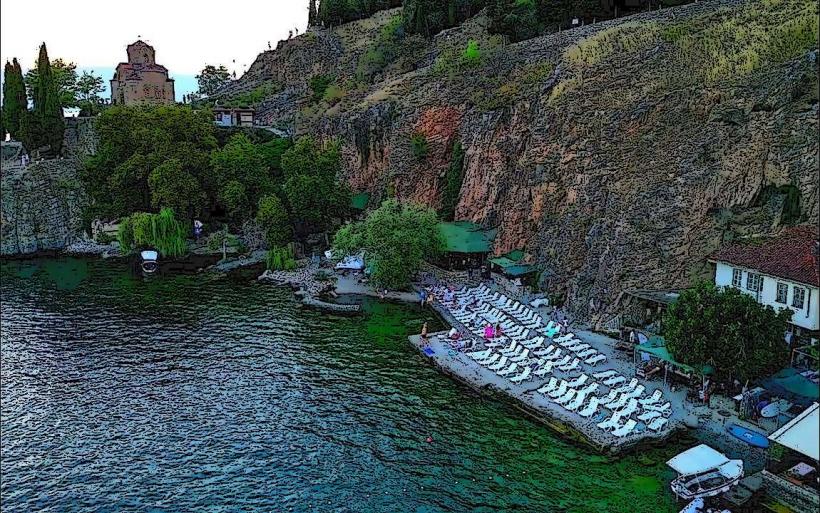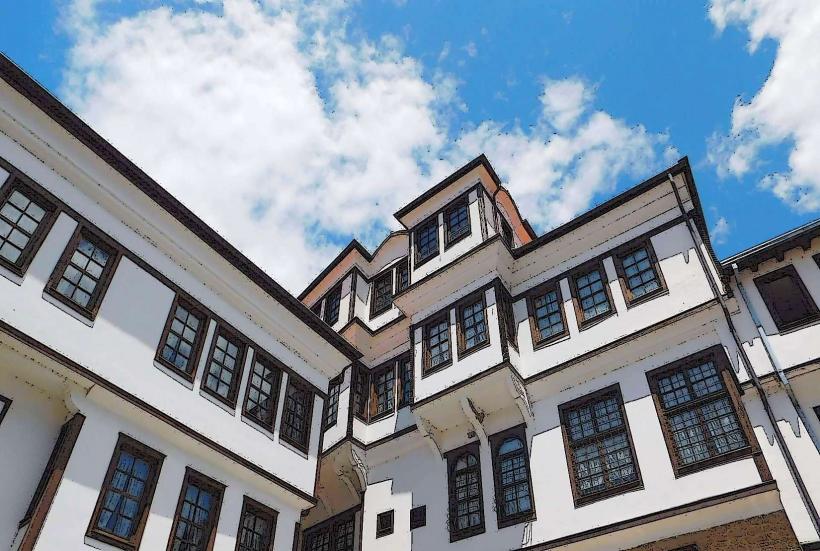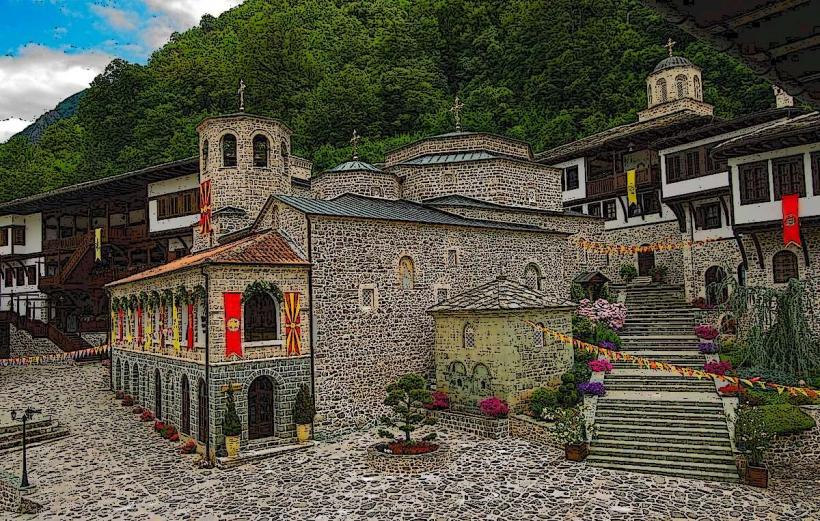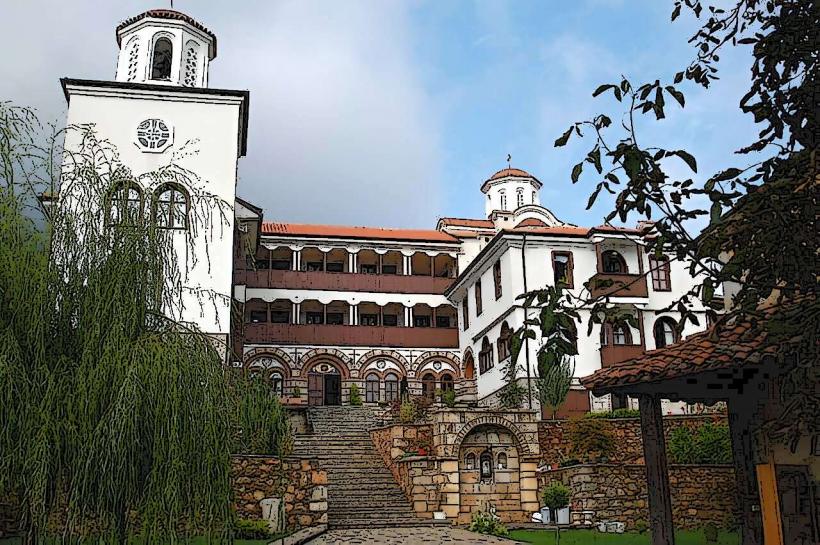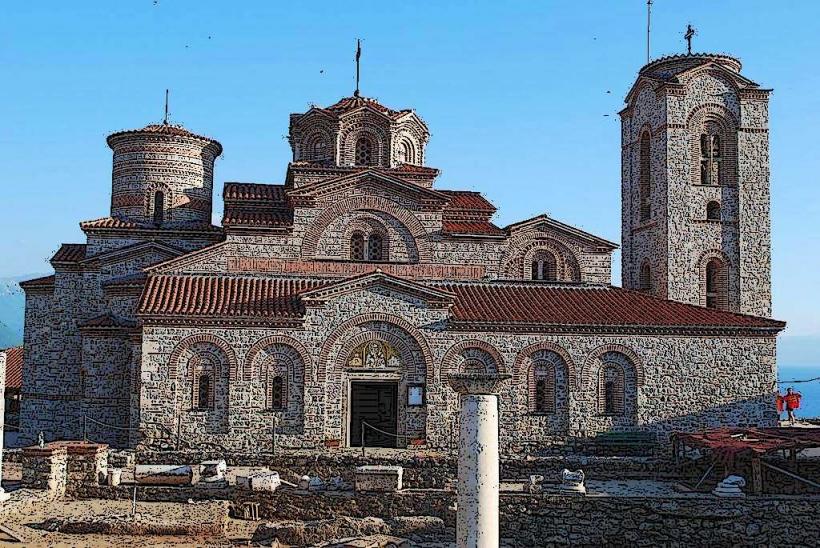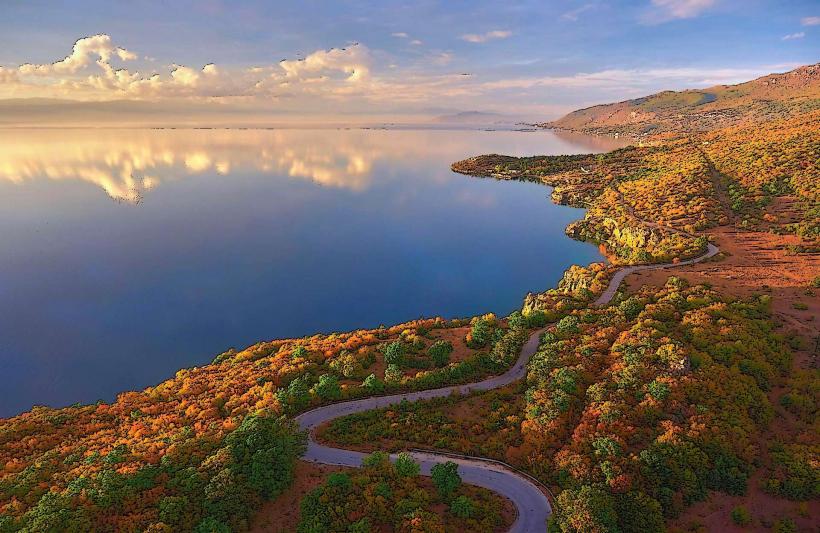Information
Landmark: Kalista MonasteryCity: Ohrid
Country: North Macedonia
Continent: Europe
The Kalista Monastery is a significant Orthodox Christian monastery located near Ohrid, North Macedonia. This medieval monastery is dedicated to St. Mary (the Virgin Mary) and is one of the many important religious sites in the Ohrid region, which is renowned for its rich spiritual and cultural heritage. The monastery is especially known for its historic and artistic significance, as well as its picturesque setting on the southern shores of Lake Ohrid.
Overview:
- Location: The Kalista Monastery is situated in the village of Kalista, approximately 20 kilometers south of Ohrid, close to the shore of Lake Ohrid. The monastery is set in a serene and natural environment, with breathtaking views of the lake and the surrounding mountains, providing a peaceful and spiritual atmosphere for visitors and pilgrims.
- Dedication: The monastery is dedicated to St. Mary (the Virgin Mary), which is a common theme for many Orthodox monasteries in the region. It is also referred to as the Monastery of St. Mary in some sources.
History:
- Founding and Origins: The exact founding date of the Kalista Monastery is not definitively known, but it is believed to have been established during the medieval period, likely in the 11th or 12th century. The monastery was built at a time when Christianity was flourishing in the Ohrid region, which was a center for Orthodox Christianity.
- Byzantine Influence: Like many monasteries in the region, the Kalista Monastery was influenced by the Byzantine Empire, which was known for its religious art, architecture, and theology. The monastery's architecture and religious traditions reflect this influence.
- Renovations and Restoration: The Kalista Monastery has undergone various renovations over the centuries, especially during the Ottoman period, when many Orthodox Christian monasteries and churches were either abandoned, repurposed, or restored. The most recent restorations have ensured that the monastery remains an active and important site for religious life and tourism.
Architecture:
- The Kalista Monastery follows the traditional Byzantine style of architecture, with a cross-in-square design, which was common for many Orthodox monasteries. It has a central nave, an apse, and a dome, typical features of Byzantine church construction.
- The church is built using stone and brick, materials that were widely used in the construction of Orthodox Christian religious buildings during the medieval period.
- Interior: The interior of the monastery church is adorned with frescoes, which are a key feature of many Orthodox churches. These frescoes depict various biblical scenes, including the life of Christ, the Virgin Mary, and various saints. The iconostasis (a screen separating the altar from the congregation) is often richly decorated with icons of Christian figures, such as Christ, the Virgin Mary, and patron saints.
- The monastery complex also includes a courtyard, where visitors can reflect, pray, and enjoy the tranquil environment.
Religious Significance:
- Active Monastery: The Kalista Monastery is an active religious site, and it continues to serve as a place of worship for local Christians. The monastery is often visited by pilgrims, especially during important Christian holidays and the feast days dedicated to the Virgin Mary.
- Pilgrimage: As with many Orthodox monasteries, the Kalista Monastery has become an important site for pilgrimages, especially for those who seek spiritual solace and connection with Saint Mary.
- The monastery’s spiritual importance also lies in its role in preserving the religious traditions of Eastern Orthodoxy, which includes regular liturgical services, prayers, and other religious observances.
Frescoes and Icons:
- The Kalista Monastery is known for its frescoes and icons, which are typical of Byzantine-era religious art. The frescoes in the monastery depict various biblical events, such as the life of Christ and scenes from the Old and New Testaments. The icons of the Virgin Mary, Christ, and other saints are significant in Orthodox Christian worship and are used as objects of devotion in the monastery’s services.
- The frescoes in the Kalista Monastery are particularly important for understanding the artistic and religious traditions of the medieval period in the Balkans. They reflect the distinctive style of the Ohrid school of iconography, which was influenced by the Byzantine tradition but also carried local, Slavic characteristics.
Natural and Scenic Beauty:
- The Kalista Monastery is located in an exceptionally beautiful setting, surrounded by the stunning natural landscape of Lake Ohrid and the nearby Galichica National Park. The monastery is situated on a hill, which offers panoramic views of the lake, the surrounding mountains, and the village of Kalista.
- Visitors to the monastery can enjoy nature walks, hiking, and reflection in the tranquil environment. The beauty of the location enhances the spiritual experience, making it a place of quiet contemplation and connection with nature.
Role in Ohrid’s Religious and Cultural Heritage:
- The Kalista Monastery is an integral part of Ohrid’s religious and cultural heritage. Ohrid is known for its deep connection to Christianity, and the monastery is one of the many historical and spiritual sites in the city and its surrounding areas. Ohrid itself is recognized as a UNESCO World Heritage site, and the Kalista Monastery is one of the treasures that contribute to the region’s cultural significance.
- The monastery is part of the broader effort to preserve and promote the Christian heritage of the region, alongside other iconic landmarks such as the Church of St. Clement of Ohrid, the Ancient Theatre, and the Ohrid Icon Gallery.
Visitor Experience:
- Pilgrimage and Worship: Visitors to the Kalista Monastery often experience its spiritual atmosphere by attending church services, particularly on special religious occasions such as feast days. Visitors can participate in the liturgical life of the monastery, joining in prayers and rituals.
- Tourism: The Kalista Monastery is a popular destination for tourists and those interested in religious art, Byzantine architecture, and spirituality. The peaceful surroundings and scenic beauty of the area make it an ideal spot for reflection and meditation.
Conclusion:
The Kalista Monastery is a historically significant Orthodox monastery located near Ohrid, North Macedonia. Its Byzantine-style architecture, frescoes, and religious significance make it an important cultural and spiritual landmark in the region. The monastery’s serene location by Lake Ohrid, its active role in Orthodox worship, and its connection to the broader Christian heritage of Ohrid contribute to its status as a cherished site for pilgrims, tourists, and those seeking spiritual solace in the natural beauty of the region.

